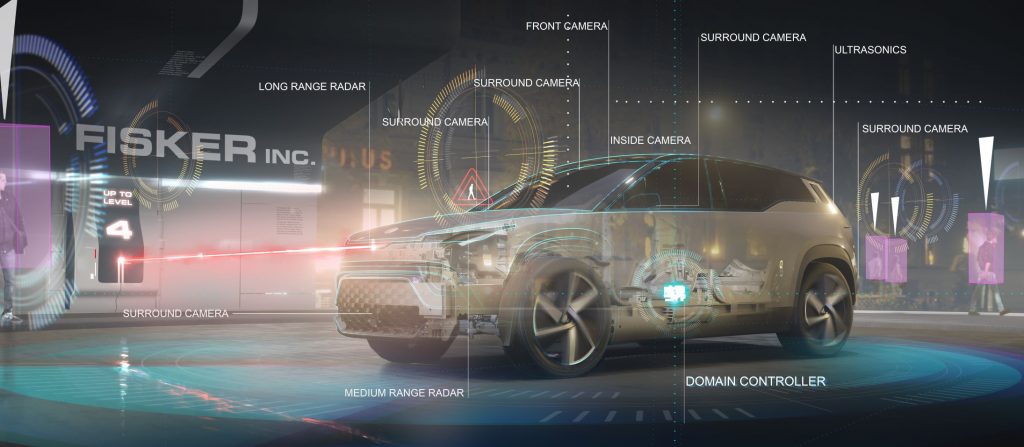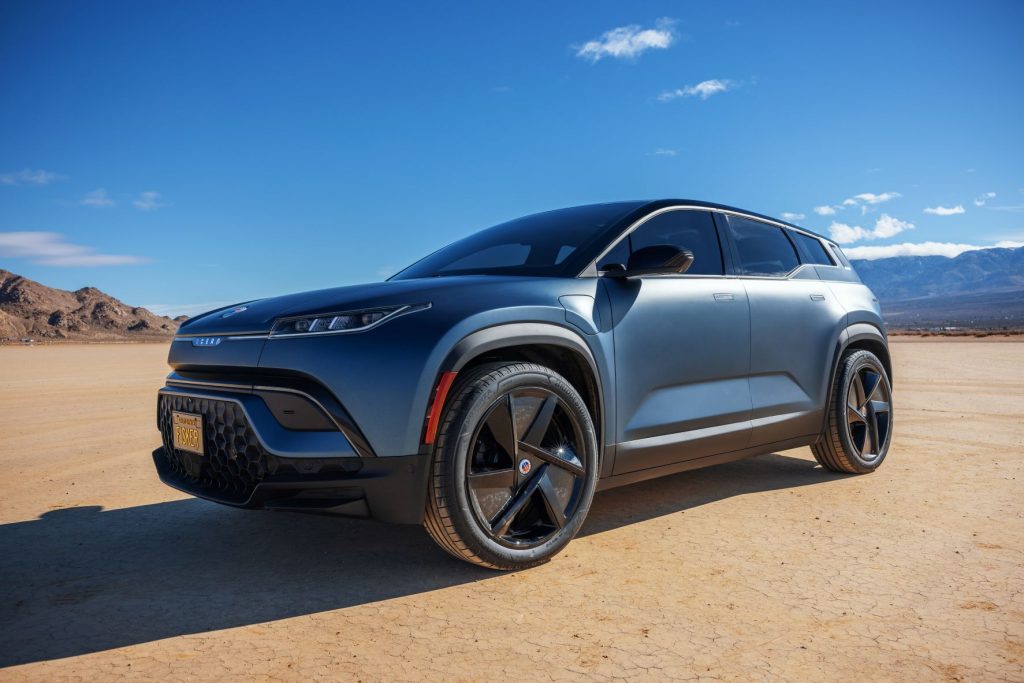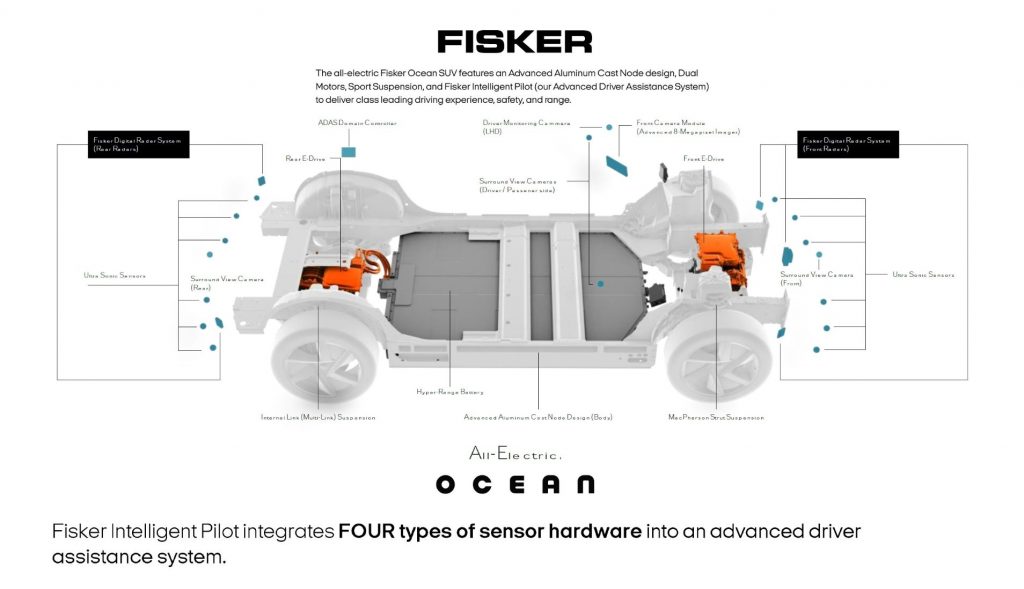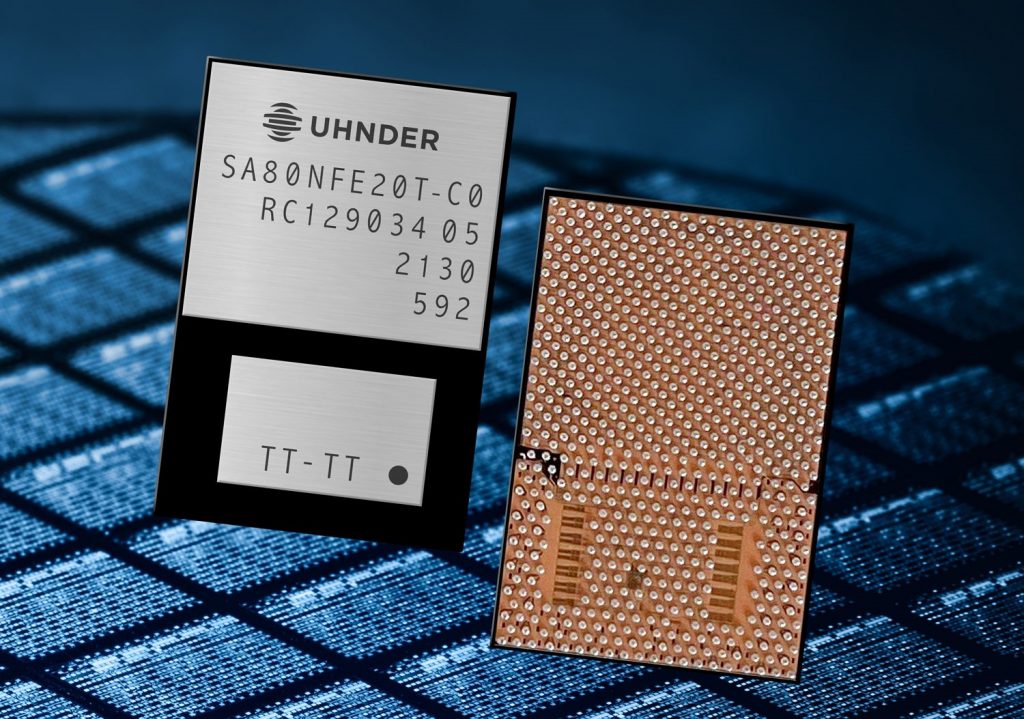
Compared to existing radar, 4D, high-resolution imaging radar has the potential to limit the occurrence of false readings, detect smaller objects, classify objects in the field of view, and track more targets that are located close together. Not only will performance be enhanced, but also the robustness in sensing and classifying different objects in the field of view, which in turn would raise system performance and consumer confidence in using ADAS.
Austin, TX-based radar startup Uhnder, Inc. became the first company to mass produce a fully automotive-qualified, 4D digital imaging radar-on-chip. Used in partner Magna International‘s Icon Digital Radar, it debuted on the Fisker Ocean electric SUV in November.
According to Fisker, the ground-breaking radar solution is part of the Ocean’s Intelligent Pilot ADAS. Five high-definition digital radars, on all four corners and at the front, provide 360° coverage. The EV maker says that the new radars deliver high levels of detail, can locate smaller objects more quickly and precisely, and have a faster scan rate than analog radar for faster response time. They can detect and track obstacles at long range—vehicles at 200 m (656 ft) and pedestrians at 80 m (236 ft).

Uhnder says its technology delivers better accuracy and the power to sense moving or standing objects, large or small, at both short and long distances in all weather and lighting conditions, all while mitigating mutual interference between other radars. The company says it can clearly identify a pedestrian crossing the road, a child entering the street from beside a parked car, or a bicyclist next to a guard rail, at levels of accuracy that legacy analog radar systems cannot achieve.
In April 2022, Uhnder released its radar-on-chip to mass production. The company says that its S80 completed stringent automotive requirements including Automotive Electronics Council (AEC) Q104 qualification, ISO 26262 Automotive Safety Integrity Level (ASIL-B) rating, and Production Part Approval Process (PPAP), providing its first Tier One customer Magna with the world-first application.
At CES 2023, Uhnder CEO & Co-founder Manju Hegde and his team were showcasing the latest developments in digital radar technology.
“Digital radar provides 16 times better resolution, 24 times more power on target, and 30 times better contrast than today’s analog offerings, improving detection capabilities for better road safety for all users—drivers, passengers, cyclists, and pedestrians,” said Hegde. “As more and more radars are fitted onto vehicles and other mobility solutions, interference among adjacent radar becomes problematic. Our radar, based on digital code modulation, mitigates this problem.”

Key differentiators
At CES 2023, Hegde spoke exclusively to Inside Autonomous Vehicles on the five critical differentiators of Uhnder’s technology versus conventional radar.
Digital radar has much better resolution, which is important for safety-critical situations.
“If there are two people talking, I need to be able to track both of them,” he explained. “One of them might walk towards me, the other one might walk away from me.” An analog radar might see one object. “It’s a random thing which one gets tracked by the radar.”
The second advantage is that more power can be directed at the target because Uhnder uses spread-spectrum communication technology similar to CDMA for cell phones.
“We can cram on a lot more transmitters and receivers,” he said. “In fact, 16 times more than our competitors, who are TI, Infineon, NXP, and ADI.” For the current application, “we have 12 transmitters and 16 receivers, and all our transmitters are on at the same time.”
With cell phones, spread spectrum technology allows multiple people “talking at” the same base station without their transmissions interfering with each other.
“That same principle of interference applies to us,” he said. “We can keep all our 12 transmitters on together because they don’t interfere with each other. [For] traditional radars, they can only keep one transmitter on at a time because they interfere. And as a result, we have more power and can target more power, meaning we can see things further.”

The third advantage of Uhnder’s technology is high contrast as with HDR in cameras. This has positive implications for challenged safety systems like automatic emergency braking, which have “serious problems” according to recent studies done by the likes of AAA. The greater contrast of digital radar would mean better AEB differentiation between human organic matter and other materials like automotive metal.
The fourth advantage is better fusion in multi-sensor systems. At CES, Uhnder had a demo showing how well its radar data fuses with that from cameras.
The last advantage, which Hegde thinks might be the most important one for the future, is interference mitigation through frequency switching.
“Radars are very susceptible to interference,” he said, but it has not been a problem because of the few cars that have had radar. “Until three years ago, [it was] less than 5%. Now it’s like 7 or 8%. But by 2025, the OEMs are saying 50% of all cars will have radars. Not only that, most cars will have multiple radars.”
For Level 2, he says that almost every OEM is saying there will be a minimum of three per car.
“We can switch the frequency,” he said. “Spread spectrum means higher bandwidth. Every transmission we do is across the entire band. The traditional radar guys only use 2.5% of our bandwidth.”
As he explained, traditional competitors are transmitting in a narrow band, and Uhnder technology senses that band over its entire and much larger spectrum. Uhnder engineers have devised a way of avoiding interfering signals using signal processing.
“We can excise eight interferences at a time,” he said. “But remember, the 2.5% each time. So, eight times 2.5% is 20%. We should have 80% of our signal. After that, we lose performance.”

Greater volumes on the horizon
Up next for Uhnder is scaling the company.
“We are just in the beginning stages of revenue, and building a semiconductor is not cheap,” he said. “We’ve already raised $145 million, and most of it is spent. We will be doing some fundraising, but now fundraising is a lot easier because you have something that’s qualified.”
As production of the Fisker Ocean ramps up, radar sales volume will follow for that application. However, Hegde is hoping for much higher volumes. Uhnder’s exclusive with Magna expired in Q1 of 2022, so more supplier partners will be announced soon.
“Now, we actually have design wins with four other Tier Ones,” he said. They will be announced, “as soon as they let us.” Those “big companies” are waiting for their Uhnder-enabled digital radars to be specified on automotive platforms.
Hegde hopes to be able to announce more Uhnder applications in the second half of this year for production in 2025.

